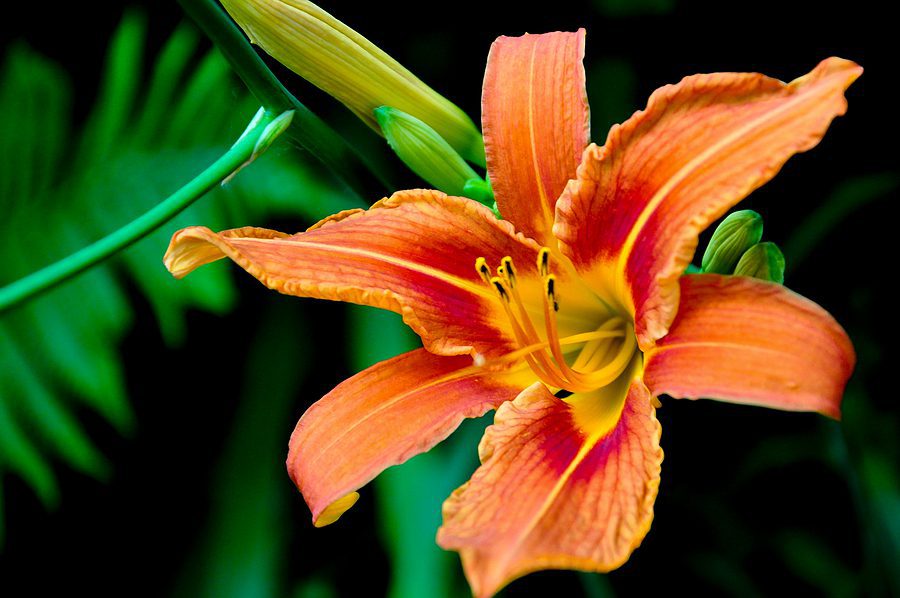The Optimum Perennial Planting Time

You may plant perennials at any point in the growing season. In fact, you can plant them till the ground freezes. However, planting them in the spring or autumn will provide the finest results. Continue to read this article and we will share more details with you on the optimum perennial planting time.
How to Plant Spring Perennials
Spring is by far the best season to grow perennials. There will be a wide variety of perennials available at your neighborhood nursery. When the ground is no longer frozen in the early spring, you may plant hardy perennials. The plants will be encouraged to set roots and start producing leaves by the heated soil. When summer heat settles into your garden, your plants will be well established.
When planting your perennials, keep in mind that they will grow much larger than they do in their pots, so make sure your garden has enough room for them to spread out. After giving your plants plenty of water, make holes bigger than the root balls.
Make sure the top of the root ball is level with the top of the planting hole when you remove the containers, plant the plants in the holes, and cover them with dirt. Water the plants once more to hydrate the surrounding soil, and then cover them with a layer of mulch to keep them from drying out too soon and to deter weed development, which would otherwise compete with your garden plants for nutrients and water. To assist your recently planted perennials overcome transplant shock and establish themselves in their new homes, be sure to water them on a regular basis.
How to Sow Annuals in the Autumn
Autumn is my favorite season to grow perennials. In any case, I’m excavating holes in the garden for bulbs. I may as well plant a few of perennials too. Before they become dormant for the winter, the earth is still warm enough for them to form their root system. They will be ahead of the game when it comes to planting perennials in the spring. Your spring-planted perennials will still be working to develop their root system, but your fall-planted perennials will start producing new leaf as the soil and air warm.
In the autumn, your neighborhood nursery will still be selling a few perennials. They will be drastically discounted, but the selection will be much smaller than in the spring. Retailers should get rid of their plants as they won’t withstand the winter in pots. Make the most of these discounts by adding a ton of perennials to your landscape. After being planted, plants will continue to grow new roots until the ground freezes and dormancy sets in, even if they look awful. Your “ugly” plants will sprout again in the spring and will appear just like the rest of your perennials.
Plant them in the same manner as if it were springtime. Compared to spring, autumn is when mulch becomes even more important. By distributing the soil’s warmth during the winter, mulch helps avoid frost heave. When the earth freezes and thaws repeatedly, frost heave occurs. It is possible to actually push plants out of the earth. Making regular journeys to your garden to check on your plants is a smart idea in the winter. To force any that have been pushed up back down, just tread on the surrounding earth, not the plants.
Autumn-blooming perennials, including chrysanthemums and asters, are often sown in the spring rather than the autumn. They won’t blossom till the next year if you plant them in the autumn.
How to Split Evergreens
For perennials, autumn is the ideal time to split them. Every three to five years, perennials need to be split. The center often dies out each year as the clusters become bigger. This is not only ugly, but it is bad for the plants as well. The healthy sections of your plants may be killed by insect and disease infestations brought on by the dead regions.
Dig up your perennials and remove all of the living parts from the dead sections to split them. Replant the healthy plant after discarding the dead foliage. The healthy plant may be further divided into smaller plants so that you can either add more plants to your garden or swap additional plants you want to add with another gardener.
How to Plant Summer Perennials
It is not advisable to plant perennials in the summer since heat is their nemesis. There are a few things you can do to increase the odds of survival if you have to plant or transplant during the sweltering summer.
To plant your perennials, choose an overcast day or wait until the late afternoon or early evening when the sun is not as strong. Next, water—a lot of it! To help your new plants adjust to their new environment and lessen heat stress, water them every day for at least two weeks. It is not advisable to plant in the early morning. Newly planted plants find the midday heat to be very stressful.
I like to hold off till there is a chance of rain. When it’s expected late in the day, I use the clouds to my advantage to finish planting before the rain comes. I plant the night before if there is a chance of rain in the morning. For any plant, a strong, deep downpour is always preferable to hand-watering, as you would after first planting. After the rain, I follow the same “water every day for two weeks” guideline.
